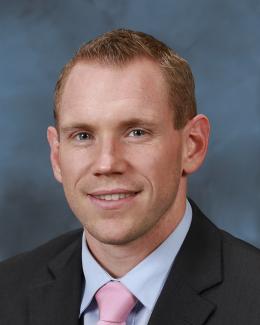The Department of Energy’s Office of Science has selected three Oak Ridge National Laboratory scientists for Early Career Research Program awards.
The program, now in its eleventh year, provides support to exceptional researchers during their early career years, when many scientists do their most formative work, in scientific fields critical to the Office of Science’s mission.
"The Department of Energy is proud to support funding that will sustain America's scientific workforce and create opportunities for our researchers to remain competitive on the world stage," Under Secretary for Science Paul Dabbar said. "By bolstering our commitment to the scientific community, we invest in our nation's next generation of innovators."
The ORNL researchers receiving awards are:

Peter Jiang, a polarization scientist in the Neutron Technologies Division, was selected by the Basic Energy Sciences program for his proposal, “Realization of Full Neutron Polarization Control: Next Generation Spherical Neutron Polarimetry for Neutron Scattering.”
Advancing research into quantum materials requires a deeper understanding of magnetism. Using ORNL’s High Flux Isotope Reactor and the Spallation Neutron Source, Jiang seeks to develop a next-generation device that that can fully control the neutron beam polarization and analyze complex magnetic structures. The development of an advanced spherical neutron polarimetry method could reveal new knowledge in complex magnetic materials that traditional methods have been unable to provide.

Elijah Martin, a scientist in the Fusion Energy Division, was selected by the Fusion Energy Sciences Program for his proposal, “Investigation of Helicon and Lower Hybrid Wave Coupling with the Edge Plasma for Current Drive Optimization in the Tokamak Using Laser Spectroscopy.”
At the DIII-D National Fusion Facility in San Diego, California, fusion scientists are pursing innovative methods to drive plasma current using radiofrequency, or RF, waves. Martin will investigate and quantify RF wave absorption phenomena that occur in the edge plasma through a combination of novel laser-based spectroscopy and advanced quantum mechanical modeling. Using this data to refine predictive computational models, he aims to provide insights that could accelerate progress towards continuous operation of fusion reactors.
The DIII-D tokamak is operated by General Atomics for DOE.

Benjamin Sulman, a scientist in the Environmental Sciences Division, was selected by the Biological and Environmental Research program for his proposal, “Simulating Estuarine Wetland Function: Nitrogen Removal, Carbon Sequestration, and Greenhouse Gas Fluxes at the River-land-ocean Interface.”
Estuarine wetlands — ecosystems where land meets rivers and oceans — are host to a complex, ever-shifting array of biogeochemical processes that affect the storage and processing of nitrogen and carbon in the soil and their release to the environment. Sulman seeks to fully assess this multidimensional system by simulating the environment using the Energy Exascale Earth System Model, a DOE leading-edge modeling, simulation and prediction project representing eight national labs, including ORNL.
The researchers will receive $500,000 annually to cover their salary and research expenses over a planned five years. The final details for each project award are subject to final grant and contract negotiations between DOE and the awardees.
UT-Battelle manages ORNL for the Department of Energy’s Office of Science, the single largest supporter of basic research in the physical sciences in the United States. The Office of Science is working to address some of the most pressing challenges of our time. For more information, please visit https://energy.gov/science.




